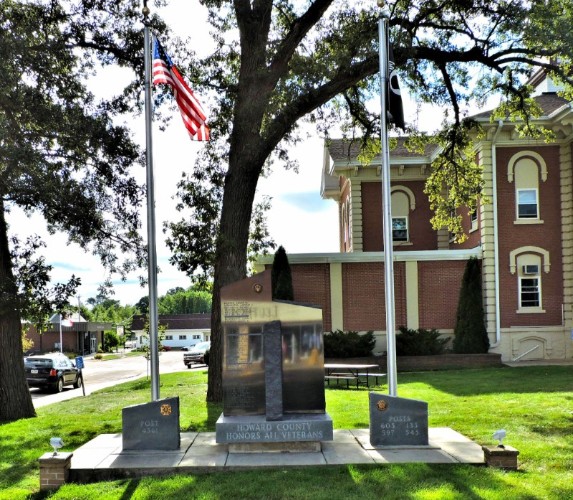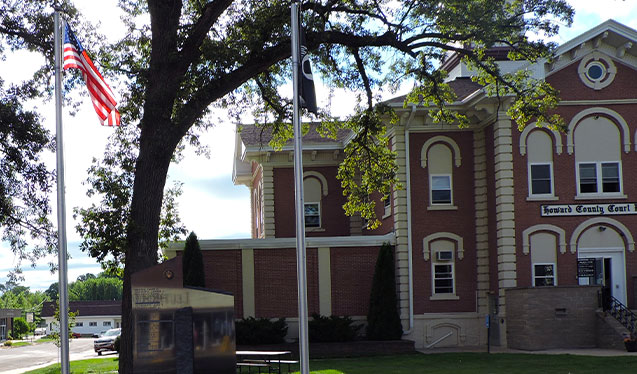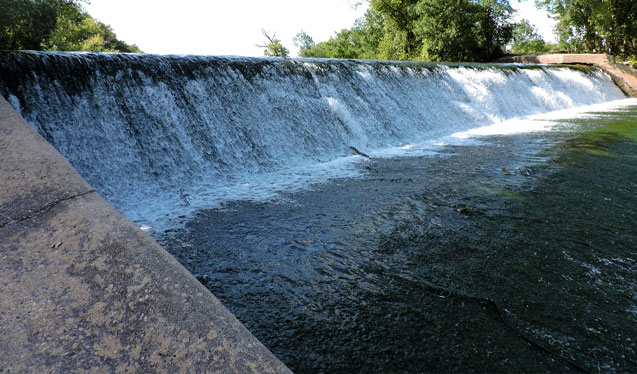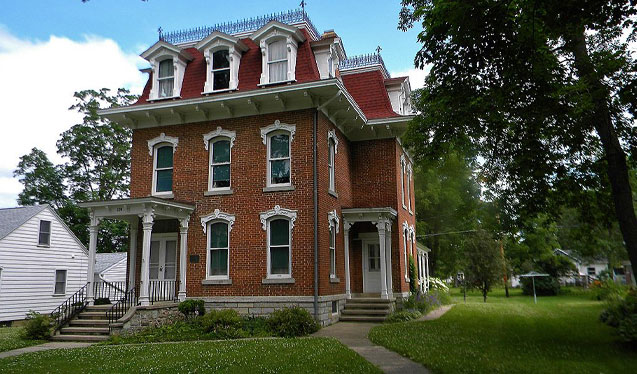Welcome to Howard County, Iowa
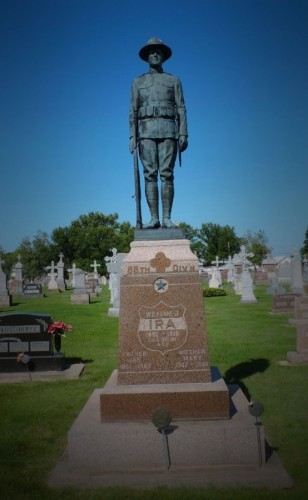
Howard County
Memorial site
Established: January 15, 1851 Organized
July 17, 1855 County Seat: Cresco 417 Square miles
Howard County was named for General Tilghman Ashurst Howard, who held various offices in Tennessee and Indiana, and who was long time friends of Andrew Jackson and Sam Houston. Howard County was organized July 17, 1855 by order of Judge James Lyon of Chickasaw County, and an election followed on August 6, 1855.
The first question to be answered after the election of county officers was where to locate the county seat, but for the first few years, the seat of government changed so much that no one was quite sure of the official location until the first Courthouse was built four years later, court sessions were held in the homes of some of the early residents.
History About Howard County
For 25 years (1855-1880), the county seat war went on and the location if the seat of justice was tossed from onecommunity to another. Starting early in 1856 with Vernon Springs (where a sawmill had been built on the Turkey River in 1853) and the county seat was subsequently located at Howard Center (September 1856) and New Oregon.
Until the first courthouse was built four years later, court sessions were held in the homes of some of the early residents. In 1858, to settle the controversy, a courthouse was ordered to be built on a bluff known as Pikes Peak, near the Turkey River, about halfway between Vernon Springs and New Oregon.
Both of these towns had good water power, causing early settlers to locate there.Howard County was organized July 17, 1855 by order of Judge James Lyon of Chickasaw County, and an election followed on August 6, 1855. the first question to be answered after the election of county officers was where to locate the county seat, but for the first few years, the seat of government changed so much that no one was quite sure of the official location.
For 25 years (1855-1880), the county seat war went on and the location if the seat of justice was tossed from one community to another. Starting early in 1856 with Vernon Springs ( where a sawmill had been built on the Turkey River in 1853 ) and the county seat was subsequently located at Howard Center (September 1856) and New Oregon. In 1858, to settle the controversy, a courthouse was ordered to be built on a bluff known as Pikes Peak, near the Turkey River, about halfway between Vernon Springs and New Oregon. Both of these towns had good water power, causing early settlers to locate there. The courthouse was constructed in February 1859 on Court House Hill (Pike's Peak) with money raised by subscription by citizens of the two communities, Vernon Springs and New Oregon. Built of basswood lumber, the building finally rotted away and, by 1865, was unsafe for housing county records.
The county government was then relocated at Vernon Springs. Here, a small stone building, owned by L.L. Halstead, was used to hold county records In January 1867, Cresco citizens offered a new building (constructed by the Howard County Court House Association) to the county for use as a courthouse. So the flourishing railroad town of Cresco (first called Shook's Grove) became the seat of Howard County government, as directed by the board of supervisors. This building was occupied by the county officers in July of 1867.
However, the board had exceeded its authority in making this decision to relocate, and the matter was submitted to a vote on November 7, 1867. A majority (969 to 800) voted to retain the old location at "the bluff" (Pike's Peak), although county business was transacted in the new building at Cresco, where records were kept for safety and convenience. The property was insured for $3500.
This arrangement continued until the courthouse at Cresco burned on December 1, 1876, destroying the building, the court records, and some of the books and papers of other county offices. The fire was discovered about midnight Thanksgiving night (November 30), when many people were leaving a supper at Caward's Building and festivities being Held at Lyric Hall and Price Hall. Flames were centered in the courtroom on the second floor of the courthouse. Records from the offices of the treasurer, recorder, and auditor were removed before the fire spread to the first floor of the building. While cause of the fire was unknown, the careless habit of throwing lighted cigar stumps on the floor probably caused the courthouse blaze, although some attributed the fire to incendiarism.
The county suffered another loss, which was related to the fire according to rumors, when the sum of $18,500.65 turned up missing from the county treasurer's safe. Frank Kyte, who was the county treasurer from 1873 until his disappearance in July 1877, was never captured.
Previous to this defalcation, the treasurer's office was broken into during the night of March 15, 1868 and $13,000 in money and securities was stolen - the county's first financial loss by theft. A $2000 reward was offered by the county board of supervisors, and the famed Allan Pinkerton detective agency was brought in to investigate the case, but no one was ever apprehended for the crime.
After the fire in 1876, the city limits of Cresco were then extended to the south (through a legal maneuver) to include the old courthouse at the "the bluff" (Pike's Peak), just two miles away. When this was done, the board voted to move the courthouse location to the newly selected courthouse square, and an attractive building was erected between August 4, 1879 and January 1, 1880, the ending the 25 yearlong county seat controversy.
Until the new courthouse was ready for occupancy, county records and county offices were located in various homes and buildings. This 1880 courthouse is in the Italianate-Classic style. The red and buff colored brick used in its construction was made in the old McMillen Brick Plant. The courthouse association paid $5705.90 of the building cost, the county furnished $1040, and the contractors (B. D. Everingham and J. L. Harlow) were said to have lost $1825. The grounds were fenced with an ornamental railing of iron, "artistically laid out".
While the City of Cresco had given the courthouse to Howard County for court and county purposes, the question of title had been raised on several occasions and came to a head when people outside of Cresco insisted that the county should not pay for improvements on the property because they did not have clear title.
So, in 1910, the city council of Cresco voted unanimously to transfer all of the city's right and tile to the courthouse property to Howard County. On June 16, 1910, the county board of supervisors accepted the deed for the grounds.



